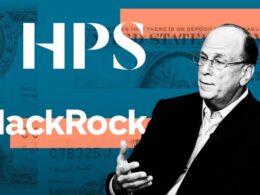Stay informed with free updates
Simply sign up to the US economy myFT Digest — delivered directly to your inbox.
US home prices hit a record high in June, even as sales dropped more than expected with prospective buyers put off by stubbornly high mortgage rates and persistent economic uncertainty.
The median price of a previously owned home climbed to $435,300 in June, 2 per cent higher than the same period in 2024, the National Association of Realtors said on Wednesday.
Sales fell 2.7 per cent month on month to an annualised rate of 3.9mn units, the slowest pace since September.
“I don’t think this disconnect can happen for a long time,” said Ali Wolf, chief economist at construction data company Zonda. “Home prices cannot go up indefinitely in an environment where demand is pulling back.”
Lawrence Yun, chief economist at the NAR, said the record prices were the consequence of “multiple years of undersupply” as “home construction continues to lag population growth”.
The real estate industry had been hoping for a boost from this year’s peak spring homebuying season, but sales have remained “tepid” as high prices and interest rates make housing unaffordable for many would-be buyers, according to Selma Hepp, chief economist at property consultant Cotality.
Mortgage rates dropped at the start of the year, providing some short-term relief, but rose again following Trump’s “liberation day” tariff announcement at the start of April.
The average 30-year mortgage rate was 6.84 per cent in the week ending July 18, according to figures published on Wednesday by the Mortgage Bankers Association. Rates hit a 23-year high of close to 8 per cent in 2023 and have not fallen below 6 per cent since September 2022.
Yun said analysis by the NAR found that 160,000 additional renters would become first-time homeowners if mortgage rates fell to 6 per cent.
The supply of existing homes entering the market slowed sharply when interest rates were increased 2022, because many homeowners were reluctant to give up the mortgages they secured at lower rates. Inventory began to tick higher in recent months, but sales have remained sluggish.
This “additional drag on demand” could be the result of “still high mortgage rates, general lack of affordability, a weakening labour market [ . . . ] or buyers’ uncertainty around their future financial situation”, said Veronica Clark, an economist at Citi.
Hepp said she did not anticipate the market would recover this year, even as consumer sentiment has begun to improve. “Since we are now entering the seasonally slower time of the year, I don’t see a boost in sales,” she said. “We are bouncing along the bottom still.”
Source link









